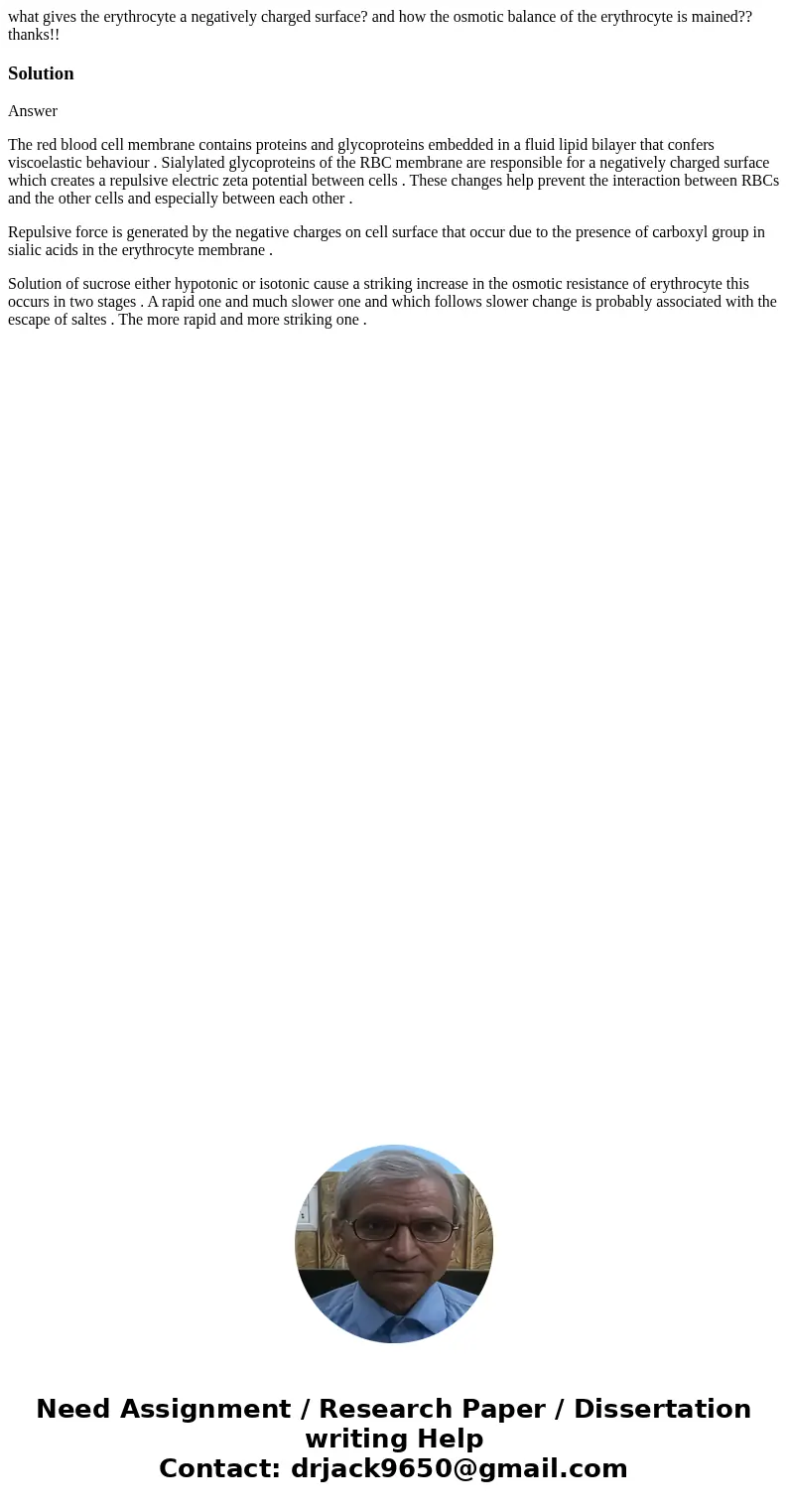what gives the erythrocyte a negatively charged surface and
what gives the erythrocyte a negatively charged surface? and how the osmotic balance of the erythrocyte is mained?? thanks!!
Solution
Answer
The red blood cell membrane contains proteins and glycoproteins embedded in a fluid lipid bilayer that confers viscoelastic behaviour . Sialylated glycoproteins of the RBC membrane are responsible for a negatively charged surface which creates a repulsive electric zeta potential between cells . These changes help prevent the interaction between RBCs and the other cells and especially between each other .
Repulsive force is generated by the negative charges on cell surface that occur due to the presence of carboxyl group in sialic acids in the erythrocyte membrane .
Solution of sucrose either hypotonic or isotonic cause a striking increase in the osmotic resistance of erythrocyte this occurs in two stages . A rapid one and much slower one and which follows slower change is probably associated with the escape of saltes . The more rapid and more striking one .

 Homework Sourse
Homework Sourse